What is the best ratio for soft idlis?
The classic idli is a simple dish with just four ingredients – idli rice, urad dal (back gram), water and salt. But the key to getting perfectly spongy idlis lies mainly in the ratio of the first three ingredients. We will get to the amount of water in a later post. For now, consider the rice : dal ratio. When we say rice: dal ratio, it usually means the volume ratio of the dry ingredients (E.g.,, 3 cups of rice and 1 cup of urad dal). Ask a traditional home cook from one of the southern Indian states, and she will most likely vouch for a 3:1 or a 4:1 rice : dal ratio. This is what is used in most households to make the classic idli. But if you search for idli recipes online, you will find suggestions ranging from a 1:1 ratio upto 8:1 or anything in between. Now, which one of these is the most failproof ratio for making soft, spongy idlis? Here’s how I tested it out.
Preparing Samples of Different Ratios
Since our goal is to check just the effect of using different rice : dal ratios, it is important to keep all other variables (like the quality of the ingredients, amount of water added, soaking time, particle size after grinding, consistency of the batter, ambient temperature, etc) exactly the same for each sample. The best way to do that in a home kitchen setup is to use a single batch of rice batter and urad batter, but mixed in different proportions to reflect different dry volume ratios. So I went ahead and ground a big batch of rice batter (with 6 cups idli rice) and and a big batch of urad dal batter (with 1.5 cups whole deskinned urad dal).
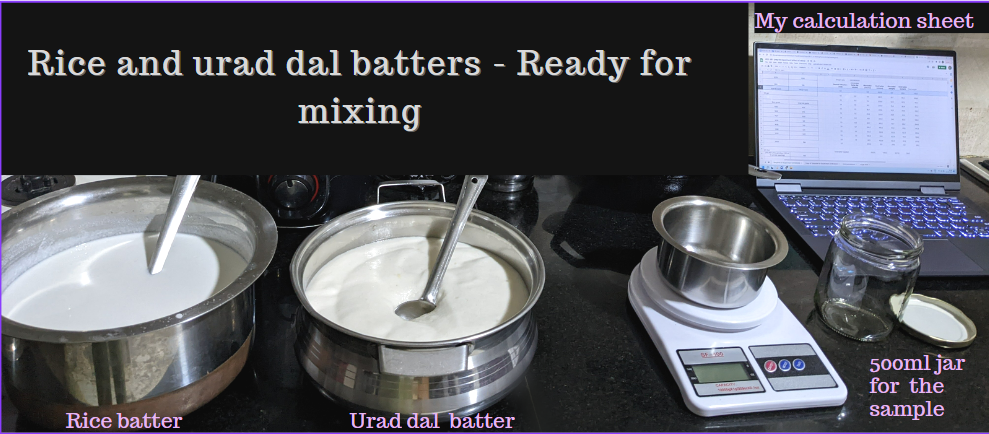
Next, I wanted to make 250 ml samples for the each following ratios that I wanted to test out:
- urad-heavy ratios – 0:1 (ie., urad dal only), 1:6, 1:4, 1:2
- commonly used ratios for idli – 1:1, 2:1, 3:1, 4:1
- rice-heavy ratios – 5:1, 6:1, 1:0
- The unknown ‘X’ ratio – this is a wild card entry, made with the rice and urad batter left behind after making the above samples
To find out the exact proportion of rice and urad batter to be mixed for making each sample, I had done pre-trials with a 4:1 ratio to find out the relationship between the dry volume of grains and wet volume of batter, for both urad and rice. I then back-calculated from the desired dry-volume-ratio to find out how much of the wet batters should be mixed. You can find the calculations here. If you would like to replicate this experiment in your kitchen, feel free to make a copy of the template. Just start with a 4:1 dry volume of the grains, then enter the volume and weight of your wet rice and urad batters in cells B24, B25, C24 and C25 in the template. I have added the formulas to the table on the right, so you will directly get how much of each batter you need to mix for different ratios.
Here are all the samples side-by-side, in increasing proportion of rice and decreasing proportion of urad dal:

Each marking on the jar indicates 50ml. You will notice a slight difference in volume between the samples – this is because the urad batter tends to lose some of its air when it is stirred while mixing with the rice batter.
Here are the samples after 13 hours of fermentation (in Bengaluru’s ambient temperature, ranging from 20 to 23degrees over the fermentation period):

Notice that the 1:0 rice-only batter has risen very little. This is because the leavening of the batter (ie., the raise in the volume because of the introduction of gas bubbles) happens mainly due to the helpful microbes present in the urad dal. (Look out for a later post on these microbes). Also notice, that as the proportion of rice increases from the 1:1 sample to 6:1, there is a more pronounced dome on top. The samples are now ready for steaming.
Steaming
I took 2 tbsp of each sample and steamed the idlis in two batches, with six of the samples in each batch. I’m not sure if you can notice this in the pictures above and below – the urad-heavy batters are slightly yellowish. The more the proportion of rice, the whiter the batter. Also the batter becomes more ‘flowy’ (less viscous) with the increase in the proportion of rice.
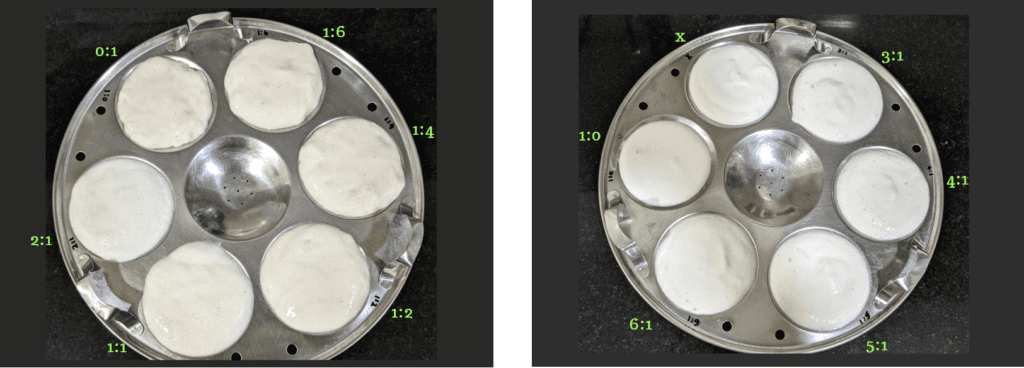
For both the batches, after steaming the idlis for 7 minutes and letting them rest for 10 minutes, I removed them from the mould using a wet spoon.
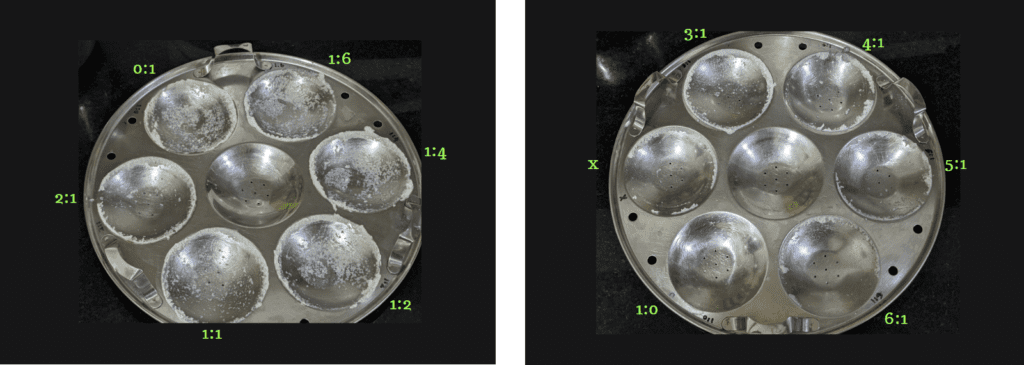
Did you notice a trend here? The higher the proportion of urad dal in the batter, the stickier the idli. For the rice-only batter, the thing did not stick at all!
Texture and taste differences between different rice : dal ratios
Now to the most important part – which of these ratios ended up with the best idli taste and texture?
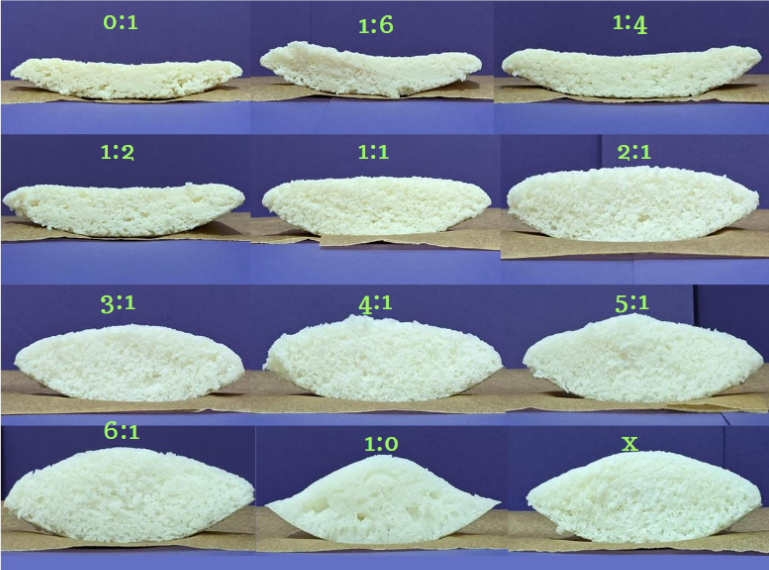
Appearance-wise, the urad-heavy samples are all caved-in at the top. There is hardly any bubble structure in these samples. There’s no hint either, of the characteristic sour-sweet smell of the classic idli. I had a hard time finishing my one bite of them. Let’s have a closer look at them one-by-one:
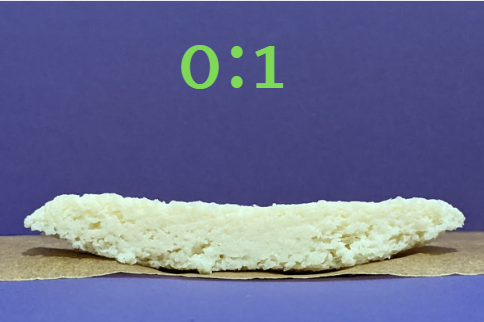 The 0:1 (urad-only) sample is like a very wet, dense kitchen sponge. Eeks! The taste and smell are quite bad too. | 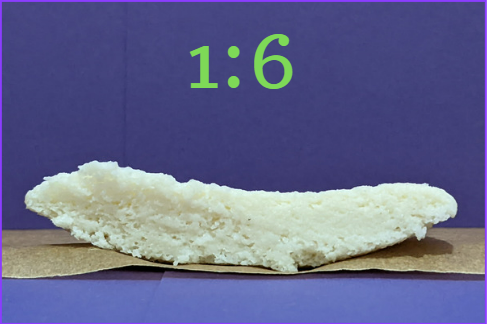 The 1:6 sample is also a wet, dense kitchen sponge. Sigh. Taste and smell are still weird. |
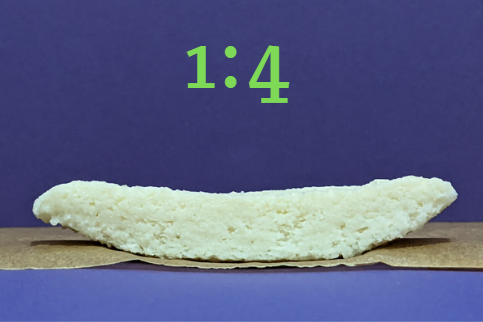 The 1:4 sample is still a wet kitchen sponge. Tastes and smells bad too. | 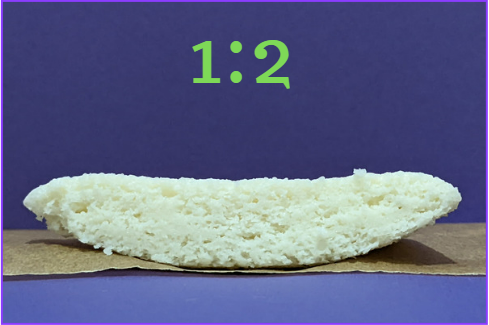 The 1:2 sample is only slightly better. Less wet but still too wet. Taste is still weird. |
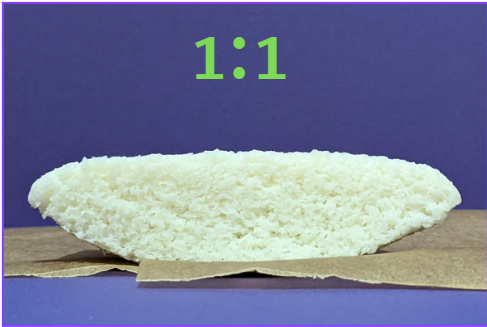 The 1:1 sample is what I would call the ‘beginning of the idli’. It is decently soft but not spongy yet. Smell isn’t bad either. | 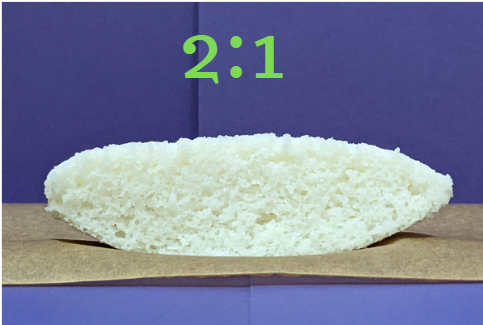 The 2:1 sample is a passable idli. No one will throw cuss words at you if you serve them this calling it an idli. |
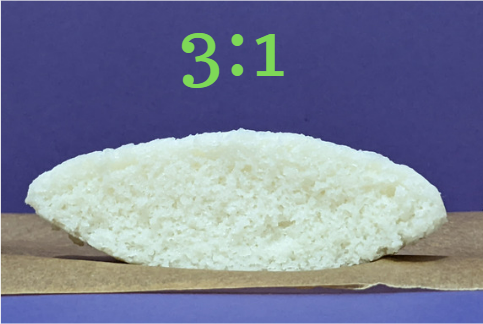 The 3:1 sample is a good idli. Soft and spongy. Smells good and tastes good too, with that hint of sour-sweetness. Quite absorbent when paired with sambar or a thin chutney. A lower-carb higher-fibre option than the ones that follow. | 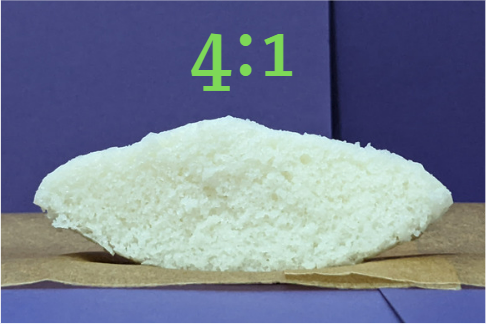 The 4:1 sample is what I’d call the best idli. Soft, airy and spongy. Has a bit more body to it than the 3:1 sample. Right notes of sour-sweetness. Also quite absorbent when paired with sambar or chutney. |
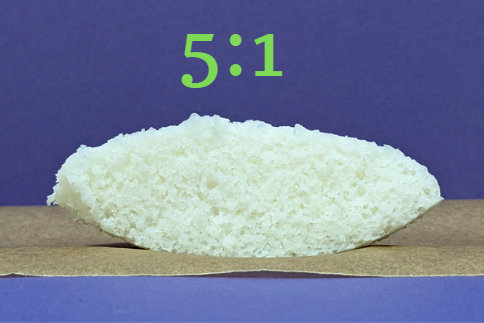 The 5:1 sample is a decent idli. It is spongy but has a stronger bite to it than the 4:1 sample. Starts bordering on becoming bouncy / chewy. Tastes and smells good. Okay to serve it with sambar or a slightly thick chutney. This option is more cost-effective than the previous ratios, if that’s what you are looking for. | 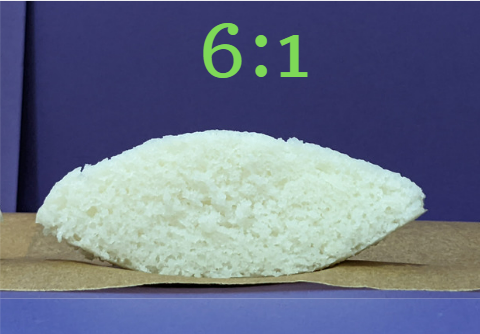 The 6:1 sample is a bouncy one and slightly hard. I wouldn’t serve it with sambar – it would just sit there repelling the sambar. A thick chutney would work better. It could be good though for making fried idlis or idli manchurian recipes where you want the idli to have a robust body and not absorb too much oil. |
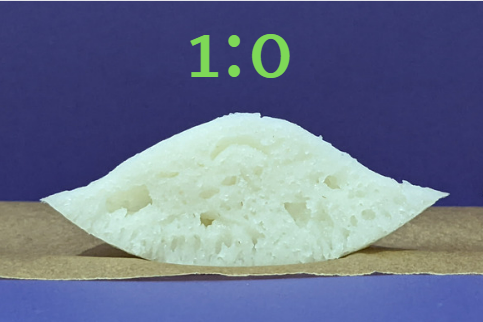 The 1:0 sample is not an idli. Very chewy and has quite a different taste. (Imagine fruit leather or gummy bears without taste or flavour). I would definitely not serve this to anyone as it is. But I think I’ll come back to it for re-inventing it into something else. | 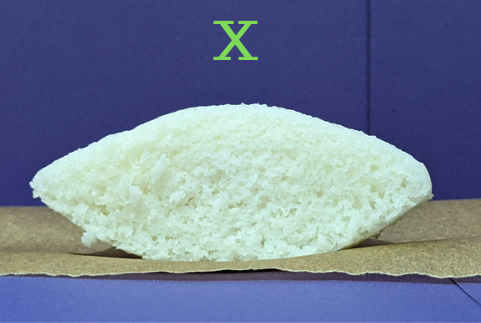 Now to the mystery ‘X’. Can you guess which ratio ‘X’ is closest to? For clues, take a second look at the spectrum of idlis in the beginning of this section. Also check out its level of stickiness to the mould. If you have formed your guess, scroll to the end of this post to check it. |
My recommendation
Which ratio would I recommend? I think it depends on the purpose:
- I would definitely use 4:1 as my go-to ratio for making idlis, especially if I am going to be serving them with sambar or thin gravies.
- If I am going to be serving them with thick chutney, I might go for 5:1.
- For a heathier fibre-rich, lower-carb version though, 3:1 is preferable.
- I would definitely avoid going higher than 5:1 if I am going to serve them in the form of idlis. (Will try out idli manchurian or fried idlis with 6:1 and share the results with you in a later post. In case you happen to try before I do, please let me know how it turns out!)
- Urad-heavy batters are a BIG no-no. There’s no hint of the characteristic sour-sweet smell of the classic idli. I wouldn’t serve them to anyone! Even the kitchen pests didn’t touch the leftovers 😀
A big factor that affects the reliability of getting soft idlis every time, is the variability in the quality of the ingredients. Some idli rice varieties are too fine or coarse; different batches of urad may fluff up differently and yield different volumes; their freshness level might be different and hence might ferment differently, etc. So a 4:1 ratio may not yield the same kind of results every time. But the advantage of the 4:1 ratio is that it gives you a good buffer on either side (urad-heaviness Vs rice-heaviness) even if the quality of your ingredients vary slightly. So you will still get good results every time. For this reason, I would recommend a 4:1 ratio for the classic idli recipe.
Some Troubleshooting Tips
Apart from the most suitable ratio, I also learnt a few other things from this experiment that give us some troubleshooting tips:
- If the idlis are flat or caved in, urad proportion is too high. Add more rice next time.
- If the idlis are sticky, urad proportion is too high. Add more rice next time.
- If the idlis are hard, rice proportion is too high. Add more urad the next time.
Flatness, caving in, stickiness, hardness can also be because you’ve added too much water or the batter is not fermented fully yet. We will cover these in later posts.
Now, Let’s Uncover The Mystery ‘X’
Calculating ‘X’:
| Remaining batter | Volume (ml) | Weight (gm) |
| Rice batter left | 1311.3 | 1474.6 |
| Urad batter left | 1028.7 | 420.2 |
| Volume ratio | 1.27 |
My reference rice : urad dal ratios were: 4:1 dry volume 1:1 wet volume
So, if wet volume ratio of ‘X’ is 1.27:1, then its dry volume ratio = 1.27*4 :1. Which is 5.08:1. Wow! (Look at the stickiness on the idli plate after it was taken out.. And the level of curvature of the top of the idli. Looks like visual indicators are a good clue after all!).
So, was your guess close to 5:1?
